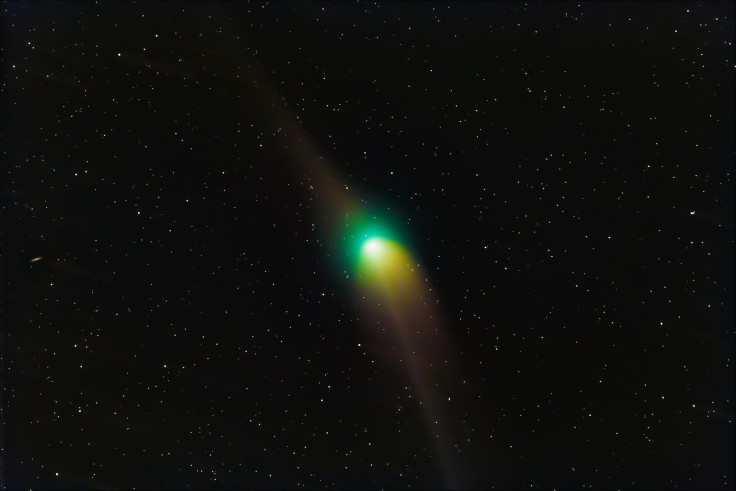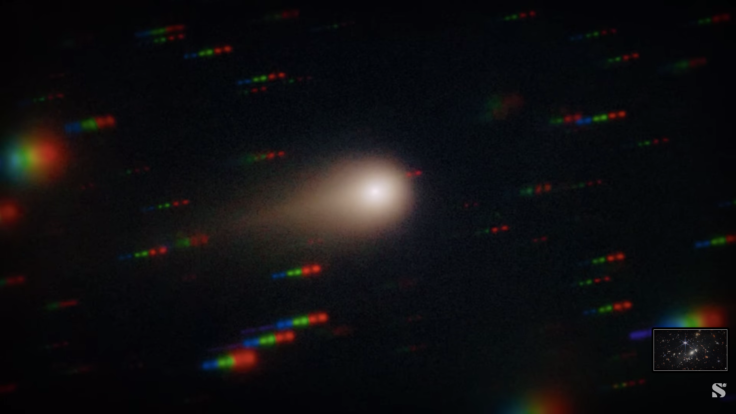3I/ATLAS Hype Debunked—NASA Explains Why It Won't Collide With Earth
Interstellar comet 3I/ATLAS is visiting our solar system. Learn about its safe path and NASA's plan to study it.

Our solar system has a new visitor. This celestial traveller, dubbed 3I/ATLAS, is not from around here. It is only the third object ever confirmed to have come from the vast emptiness of interstellar space. Its path is not a gentle loop around our Sun but a hyperbolic trajectory—a clear cosmic sign that it is just passing through.
As astronomers trace its path backward, the conclusion is clear: 3I/ATLAS began its journey far beyond our Sun's influence, wandering the galaxy before tumbling into our neighbourhood. This discovery offers a rare chance to study material from another star system, a cosmic messenger carrying secrets from the void. But with any new visitor hurtling through space, the first question is always the same: is it coming our way?

A Cosmic Near-Miss: The Safe Trajectory of 3I/ATLAS
The celestial tracker from Astronomy Vibes shows a clear path, and residents of Earth can breathe a collective sigh of relief. Comet 3I/ATLAS poses no threat. While its journey brings it into our solar system, it will remain safely in the cosmic distance.
At its closest approach to our planet, the comet will be about 1.8 astronomical units (au) away. That translates to approximately 170 million miles, or 270 million kilometres—comfortably distant. To put that in perspective, Mars at its closest is only about 38.6 million miles away; this comet will not even come that close.
Its primary encounter will be with the Sun, reaching its perihelion (closest point to the Sun) around 30 October 2025. Even then, it will be at a distance of about 1.4 au (130 million miles, or 210 million kilometres), placing it just inside the orbital path of Mars.

Catching a Ghost: How 3I/ATLAS Was Discovered
Spotting an interstellar object is like finding a needle in a galactic haystack. The official discovery of 3I/ATLAS was made by the NASA-funded ATLAS (Asteroid Terrestrial-impact Last Alert System) survey telescope in Rio Hurtado, Chile, which reported its findings to the Minor Planet Centre on 1 July 2025.
This powerful system is designed to scan the skies for objects that might pose a threat, but in this case, it found a visitor. Once the alert was out, astronomers hunted through archival data. Sure enough, 'pre-discovery' observations were found, stretching back to 14 June 2025, from three other ATLAS telescopes and Caltech's Zwicky Transient Facility at the Palomar Observatory in California.
This backlog of data helped confirm its extraordinary path. Its name is a summary of its story: the '3' signifies it is the third interstellar object found; the 'I' confirms its 'interstellar' status; and 'ATLAS' honours the survey team that first spotted it.

A Visitor Under Scrutiny: What We Know About 3I/ATLAS
With the comet identified, the world's most powerful eyes have turned towards it. NASA's Hubble Space Telescope captured a revealing image of 3I/ATLAS on 21 July 2025, when the comet was 277 million miles from Earth.
The image revealed more than just a dot; Hubble saw a distinct teardrop-shaped cocoon of dust, known as a coma, streaming from the comet's solid, icy nucleus. Because Hubble was moving to track the comet along its unique hyperbolic path, the background stars appear as streaks in the exposure.
These ongoing observations are crucial as astronomers try to pin down its physical properties. The comet's exact size remains a mystery, though data as of 20 August 2025, indicates an upper limit on its diameter of 3.5 miles (5.6 kilometres). It could, however, be as small as 1,444 feet (440 metres) across.

The Watch Party: How NASA Will Study 3I/ATLAS
The scientific community is mounting a massive campaign to study 3I/ATLAS before it disappears back into deep space. The comet should remain visible to ground-based telescopes through September 2025. After that, it will become lost in the Sun's glare as it makes its closest approach. It is expected to reappear on the other side of the Sun by early December 2025, offering a renewed window for observation.
NASA is deploying a remarkable array of assets to gather data. This includes flagship observatories like the Hubble and Webb space telescopes, alongside TESS, Swift, and the SPHEREx mission. It is not just telescopes; assets across the solar system are being tasked. The rovers Perseverance and Curiosity on Mars, along with the Mars Reconnaissance Orbiter, will try to get a look.
Even missions on their way to other targets, like Europa Clipper, Lucy, and Psyche, will gather observations, as will the Parker Solar Probe, PUNCH, and ESA/NASA's SOHO and Juice missions. This is an all-hands-on-deck effort to study a rare piece of another solar system, as documented by NASA, and scientists will be checking back for all available information.
☄️ The interstellar object 3I/ATLAS WILL NOT collide with Earth.
— Astronomy Vibes (@AstronomyVibes) October 29, 2025
On December 19, it will only reach its closest approach, at about 268 million km…#3IATLAS pic.twitter.com/kGNLWpiSFp
The journey of 3I/ATLAS through our solar system is a fleeting but profound event. It serves as a rare messenger from a distant star, offering scientists a priceless opportunity to study the building blocks of another cosmic neighbourhood. As this interstellar visitor loops our Sun and begins its long, silent journey back into the void, the data gathered by NASA's fleet of observatories will be analysed for years to come.
Don't miss this rare cosmic encounter. Follow the latest updates from NASA and the ATLAS survey as new images and discoveries are released, and witness history as we unlock the secrets of 3I/ATLAS.
© Copyright IBTimes 2025. All rights reserved.



















